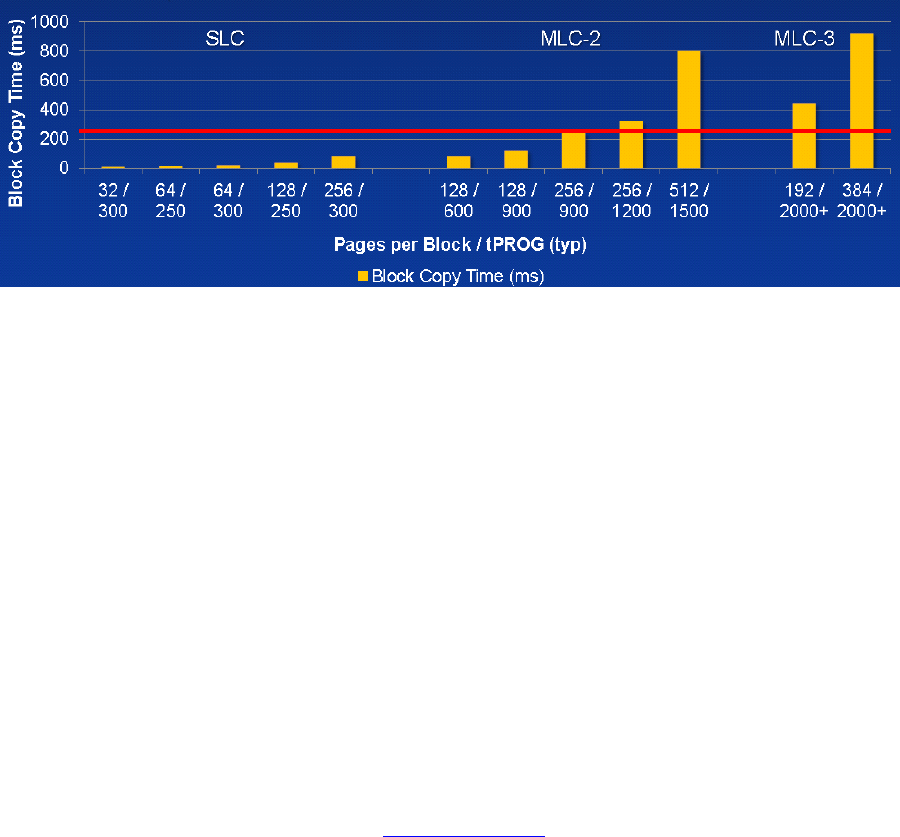Solid State Drive Technology Differences between SLC, MLC and TLC NAND

Technical white paper | Solid State Drive Technology
4
Figure 1: Block copy time
*note: tProg = program time
SMART technology
S.M.A.R.T (Self-Monitoring, Analysis and Reporting Technology) is standard in all storage devices. It monitors fault conditions
and decreases the chance of data loss by giving adequate warning to these conditions. Some of the many attributes that are
reported include re-allocated NAND block count and wear leveling count. However, SMART is not a replacement for good
disaster recovery planning.
Cost per gigabyte
The cost per gigabyte of NAND varies greatly for a given lithography. The more the bits per cell, the cheaper the cost. SLC is
the most expensive, while TLC is the least expensive.
Conclusion
Cost is always an important consideration, and TLC with its more complex voltage sensing capabilities helps to reduce the
cost per gigabyte. This cost saving comes with some limitations, such as lower endurance and slower write performance.
However, with the introduction of technologies such as DSP and AEC, device P/E cycle and endurance can be extended from
original design capabilities.
References
• Adaptive Endurance coding for NAND Flash; {ashishja, franceschini, lastrasl,karidis}@us.ibm.com
• NAND Flash Architecture and Specification Trends; mabram@micron.com
• Understanding the Robustness of SSD under Power Faults; Mai Zang, Joseph Tucek, Feng Qin, Mark Lillibridge, The Ohio
State Unitversity and HP Labs





